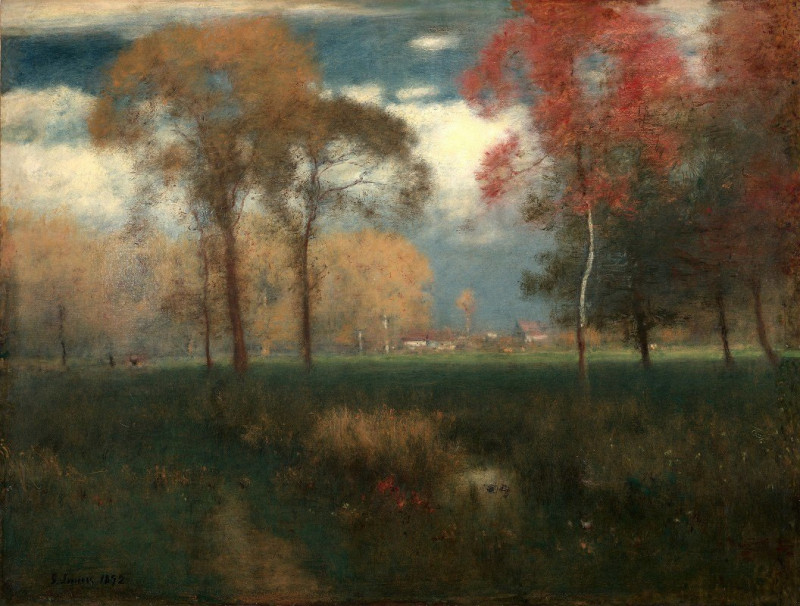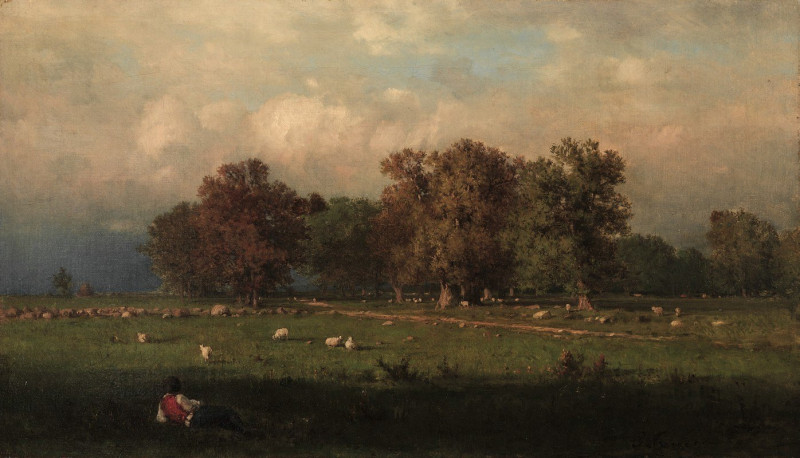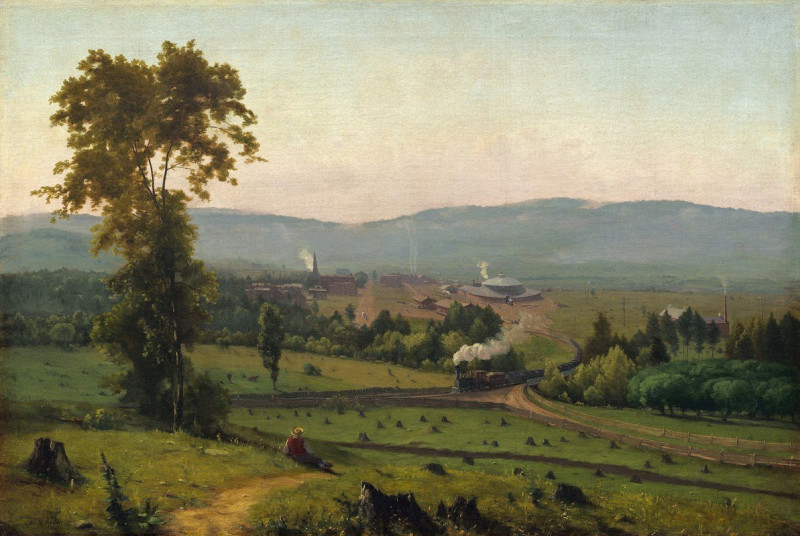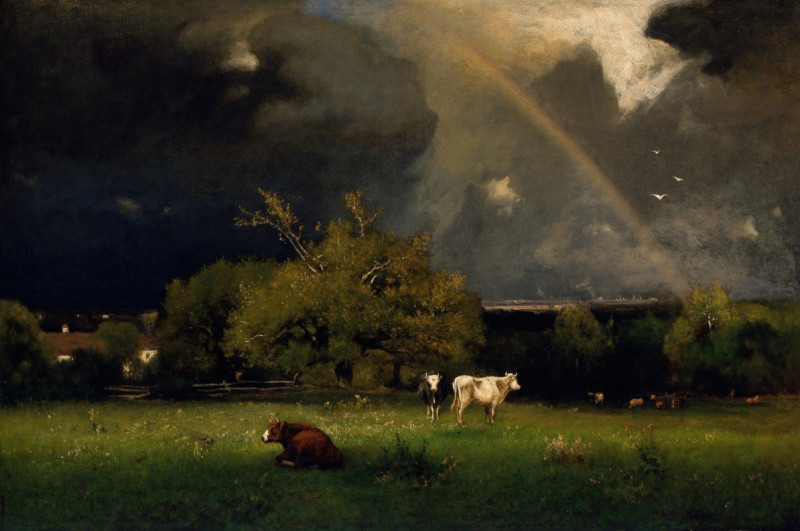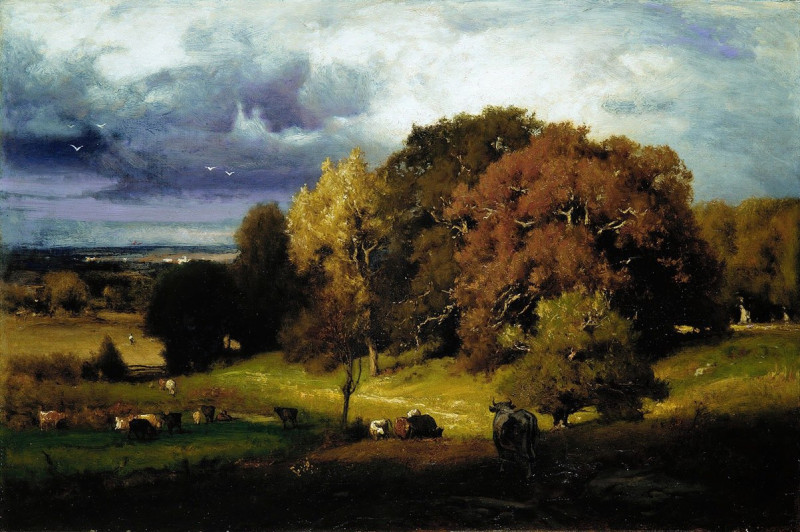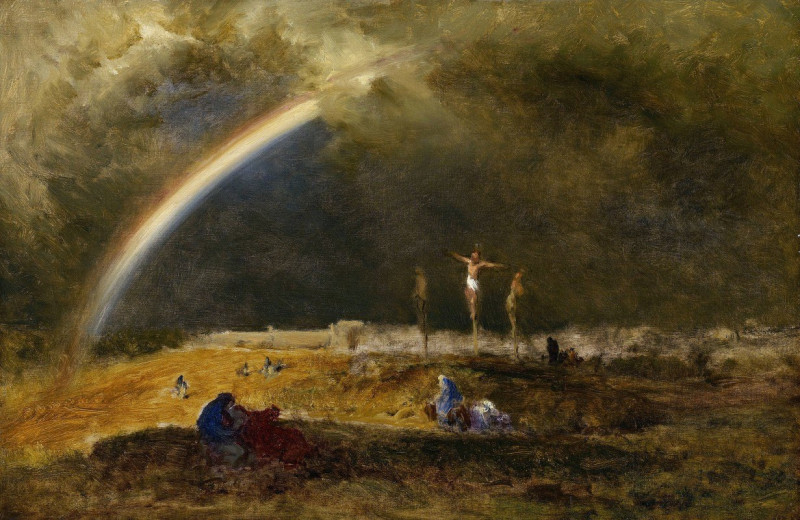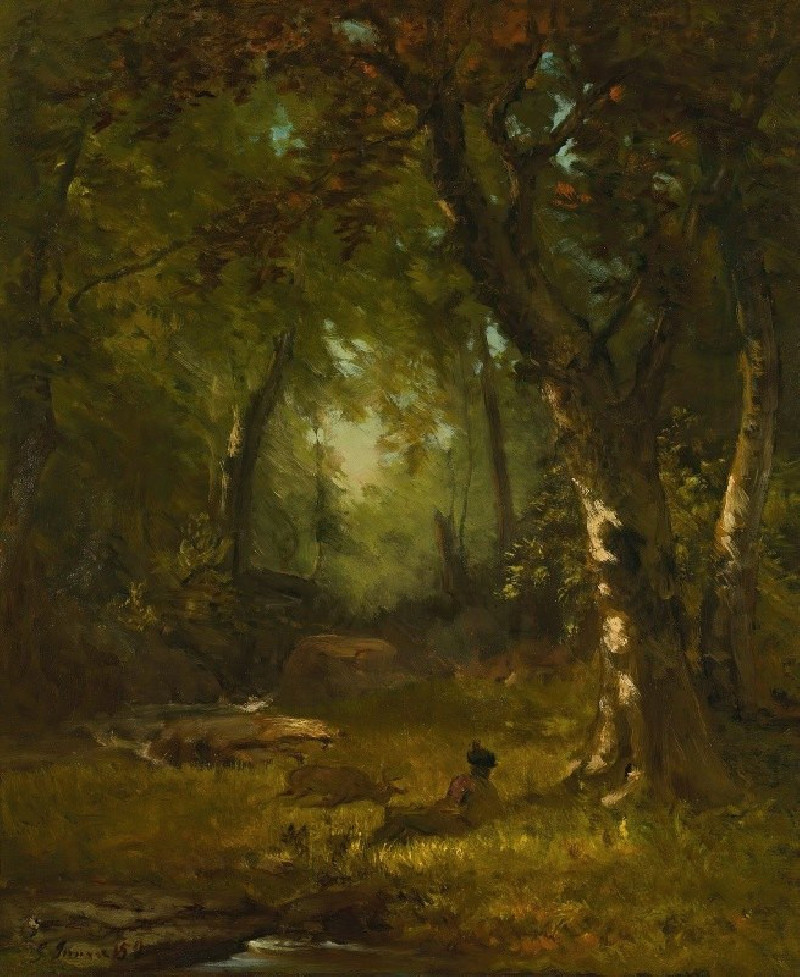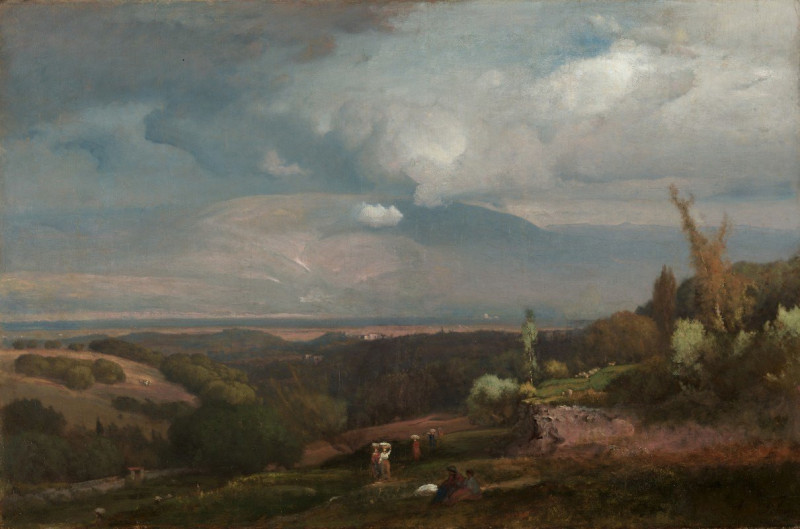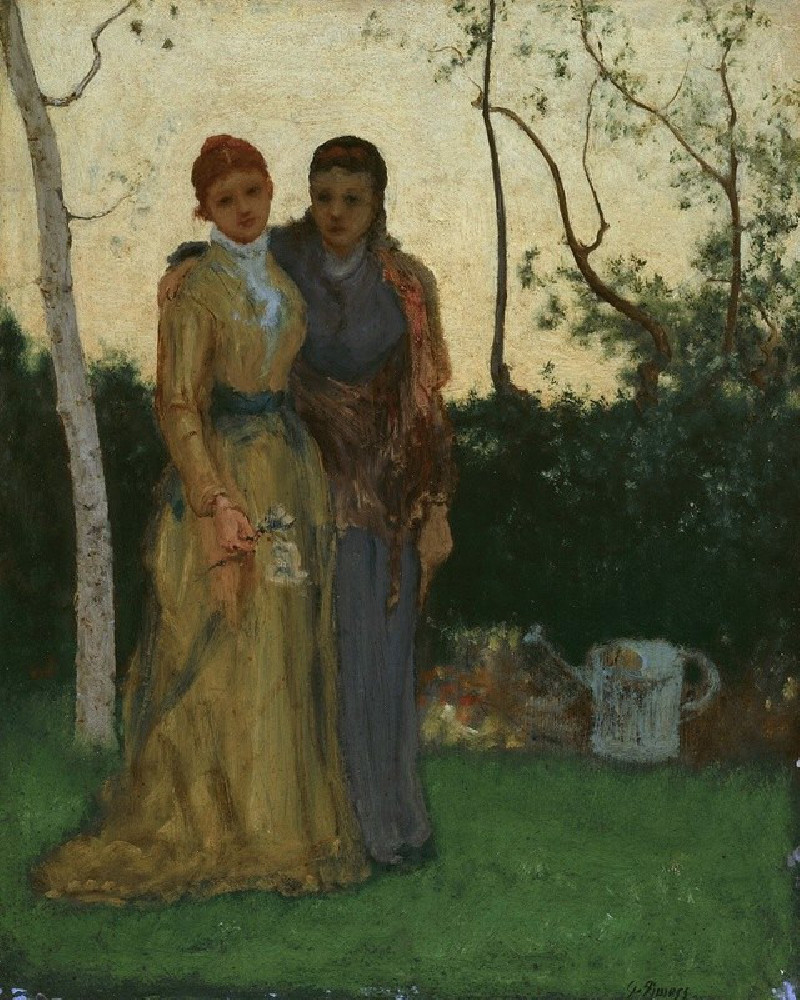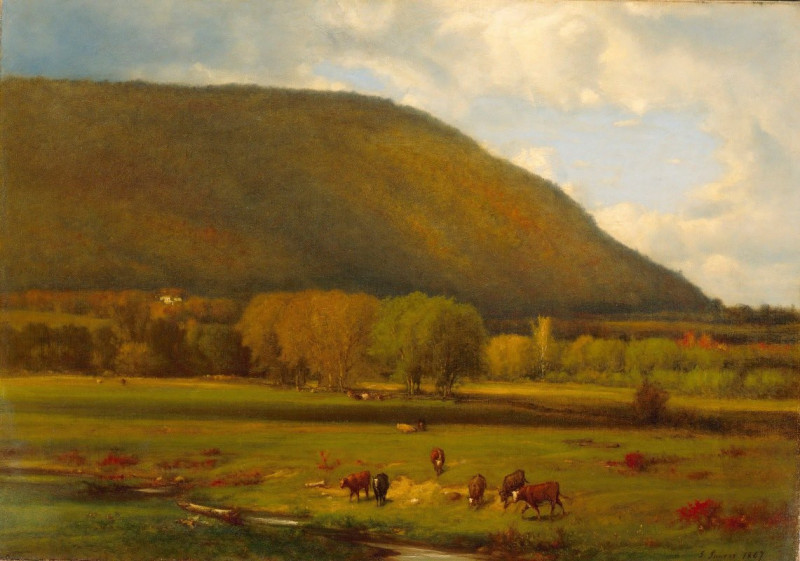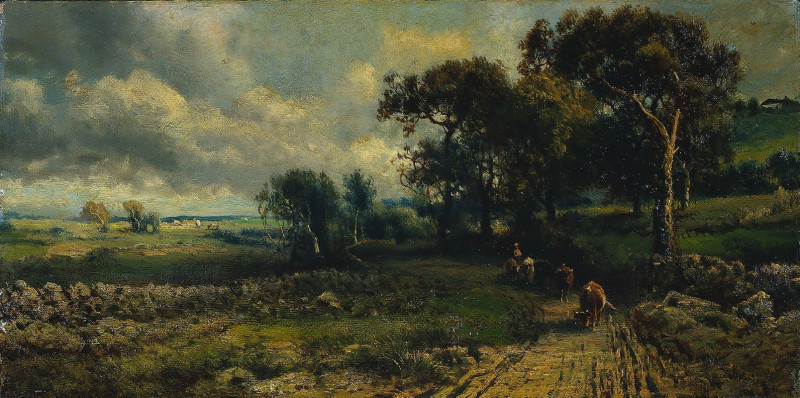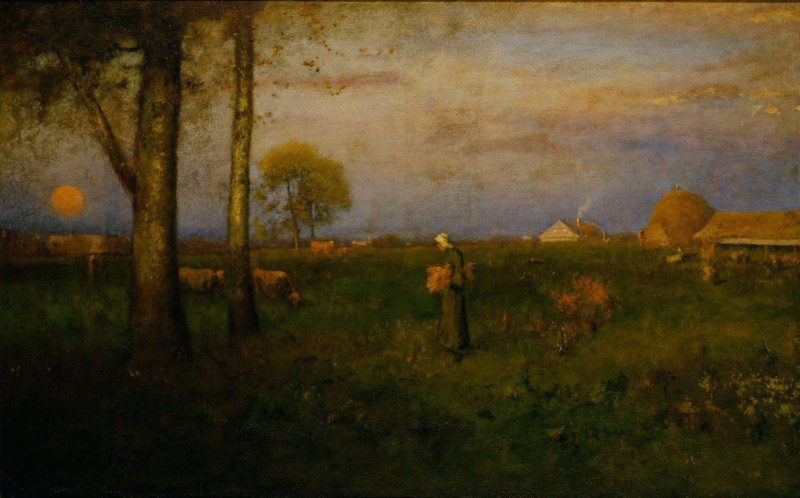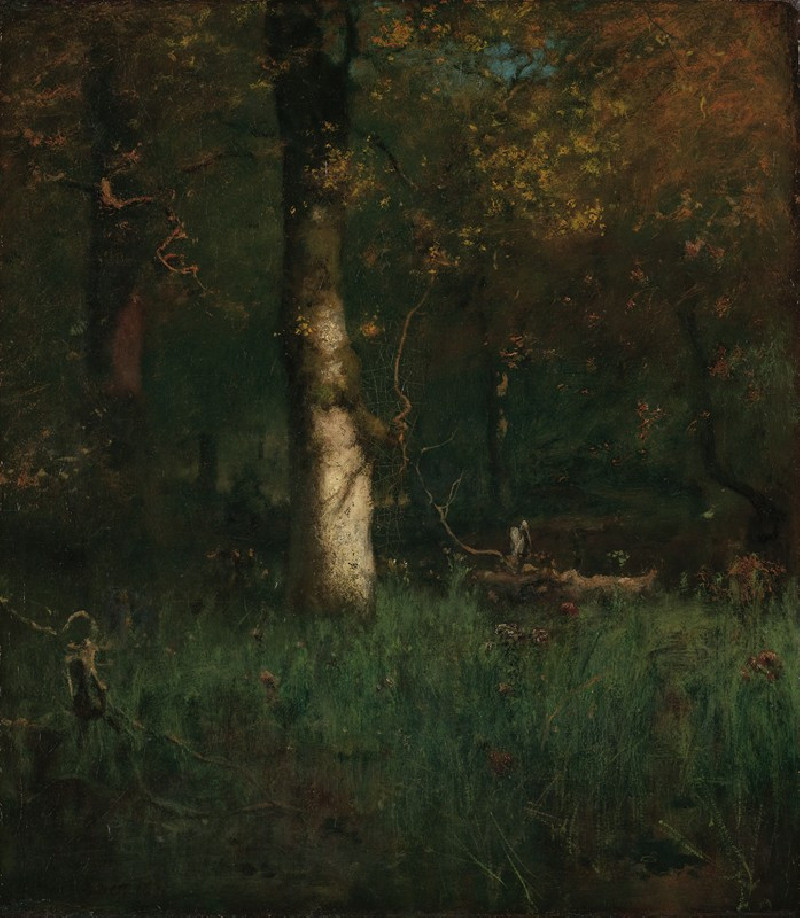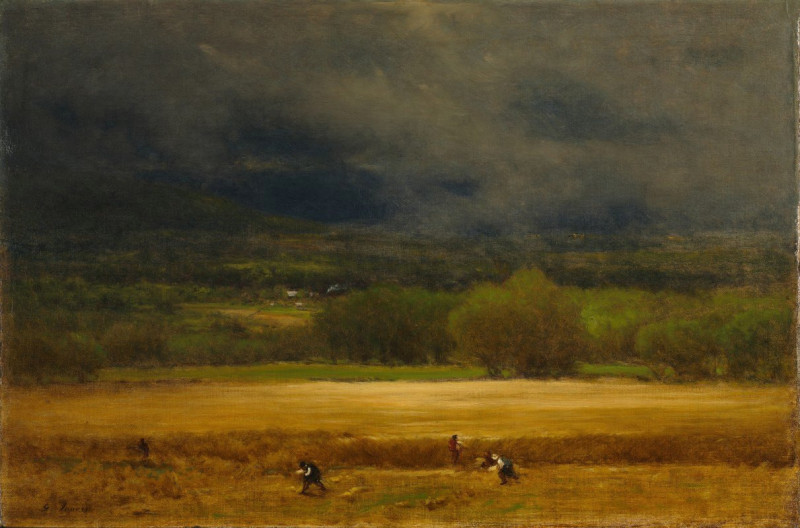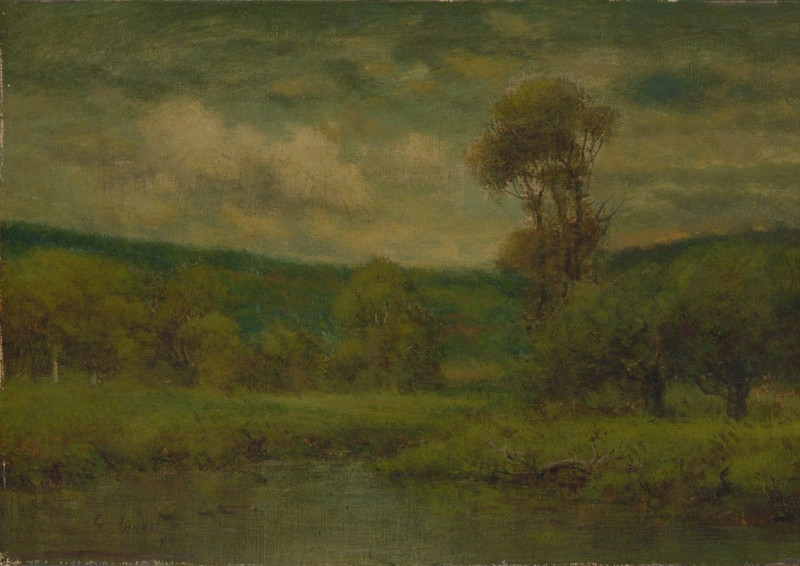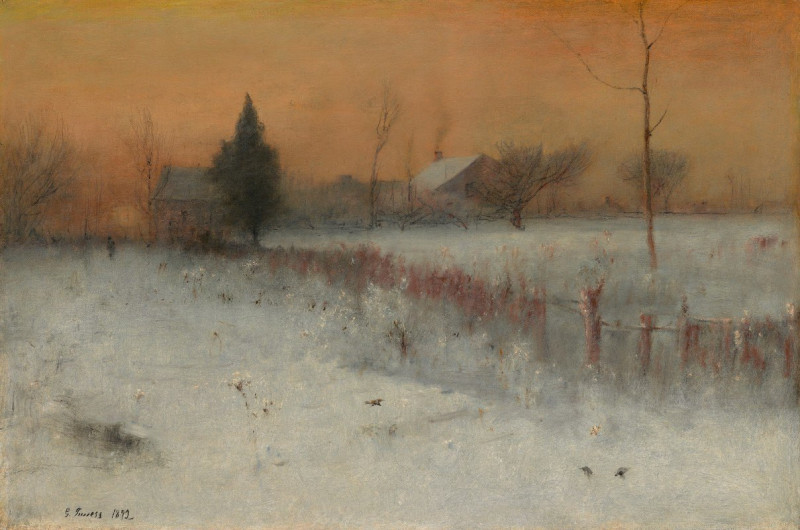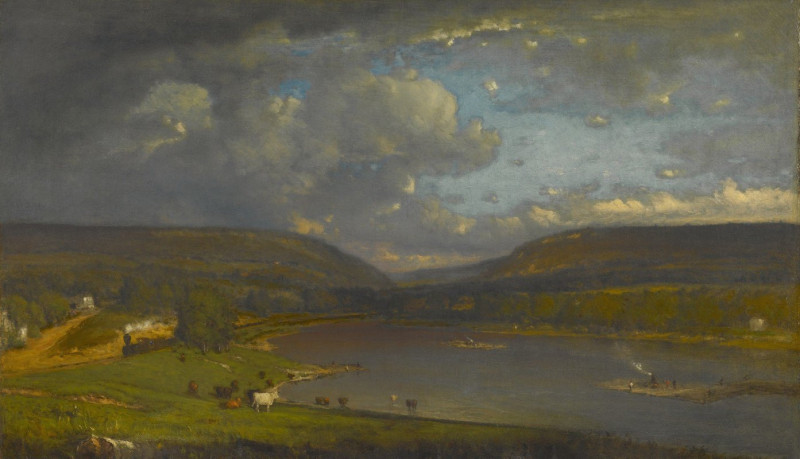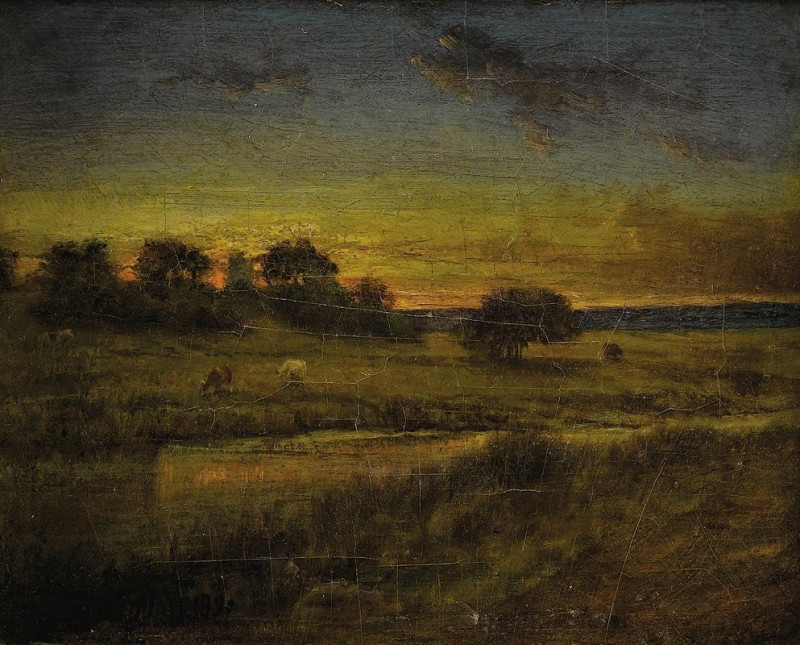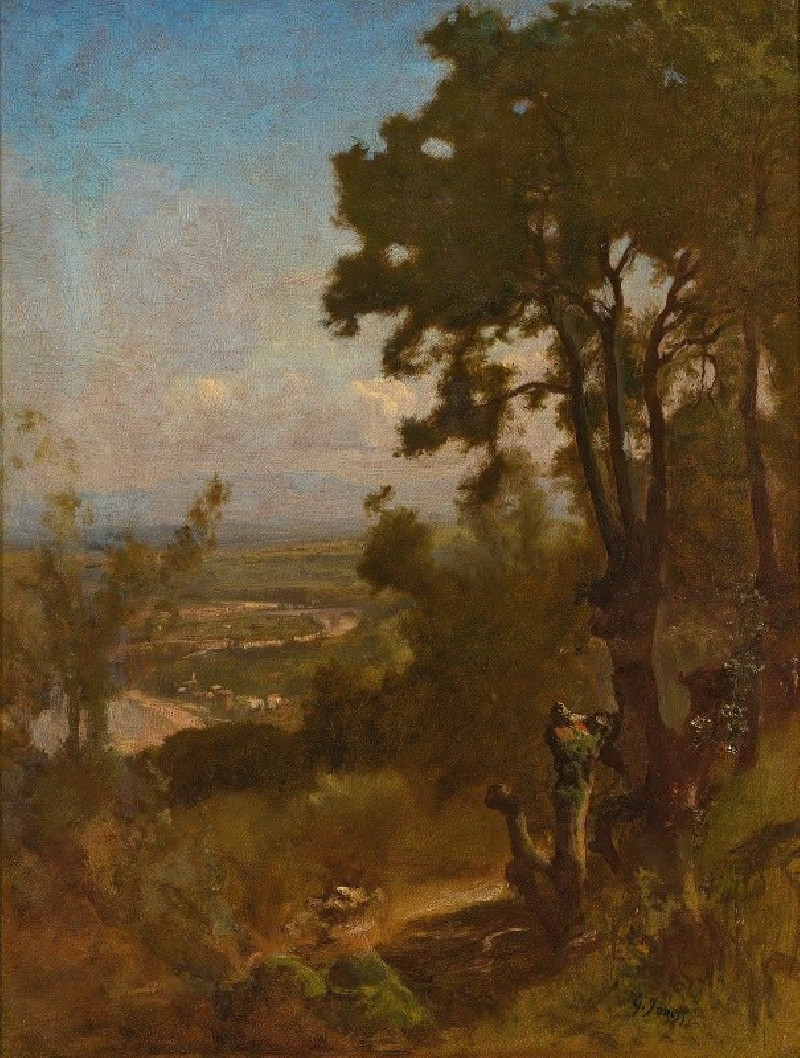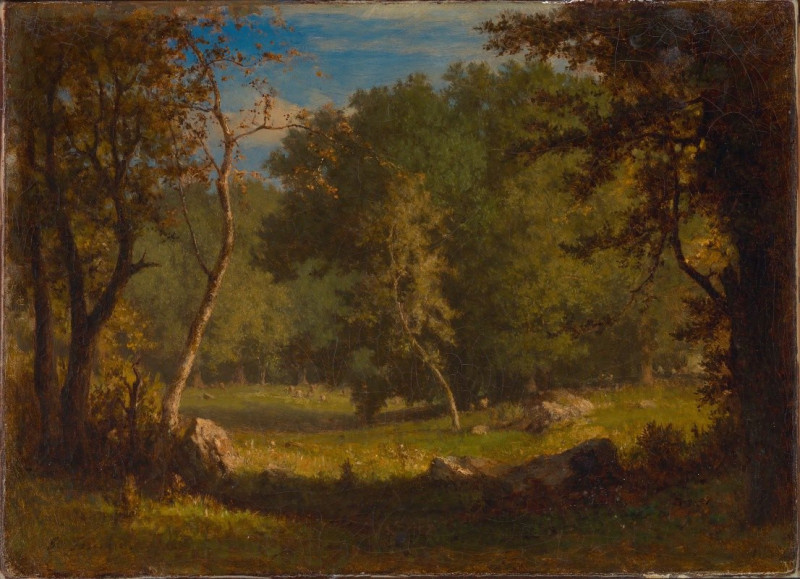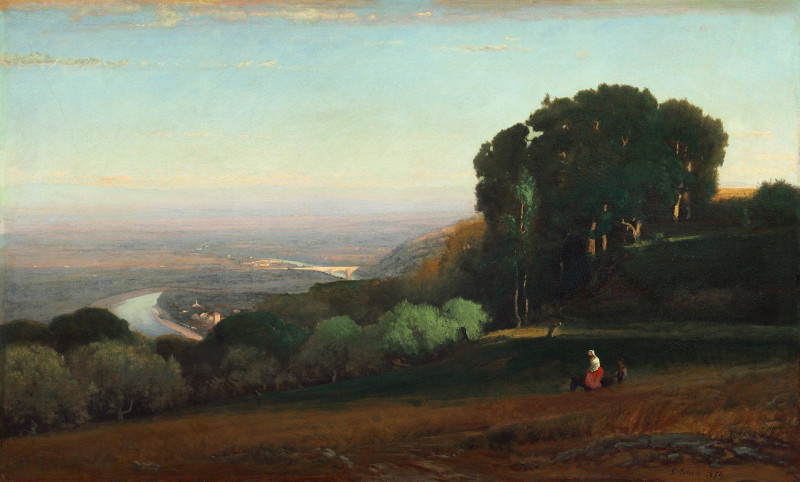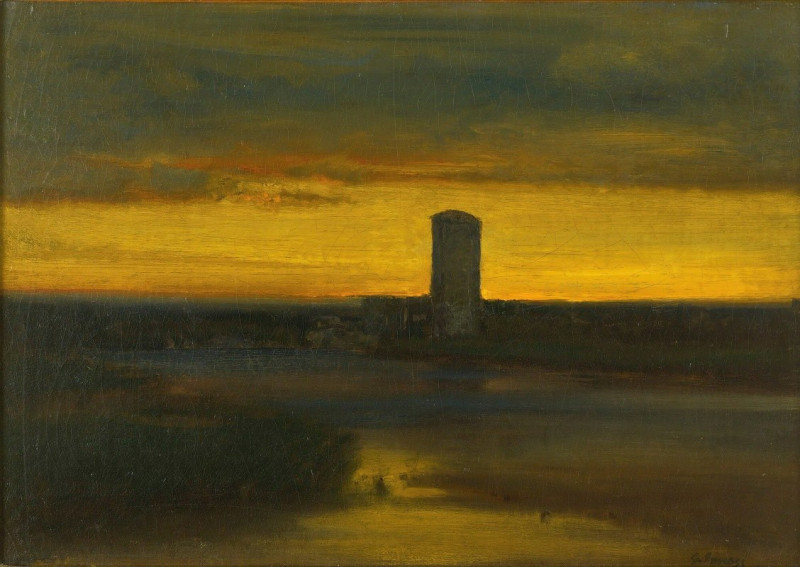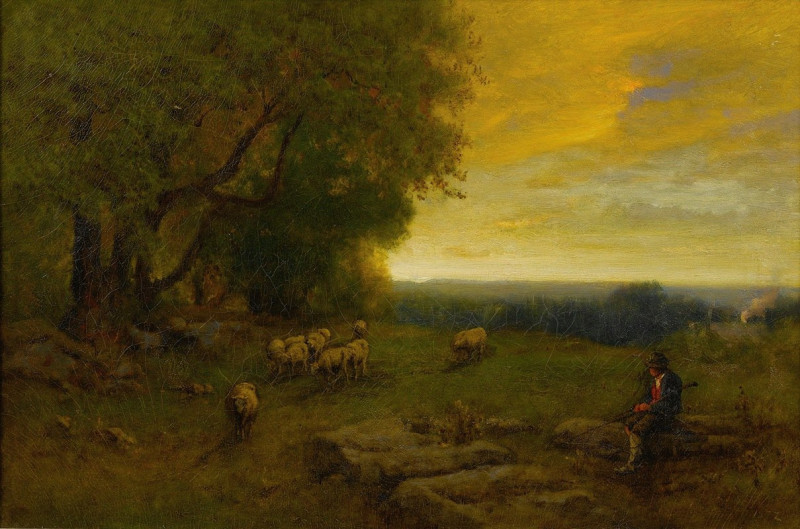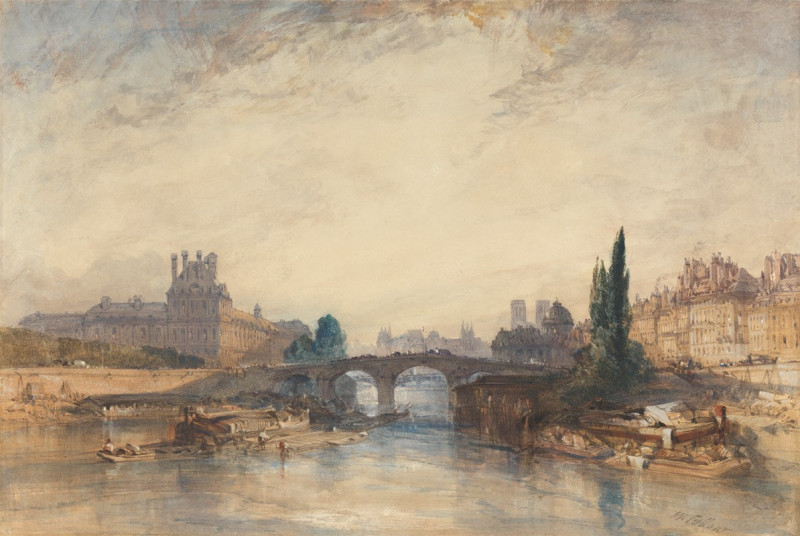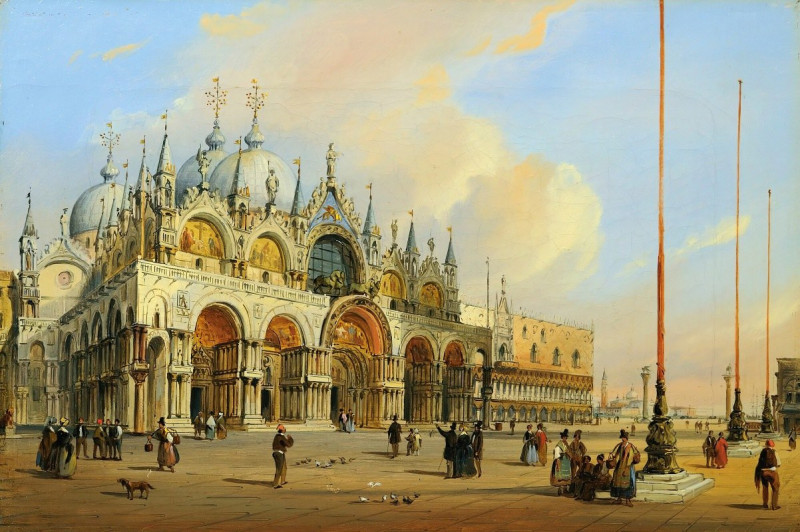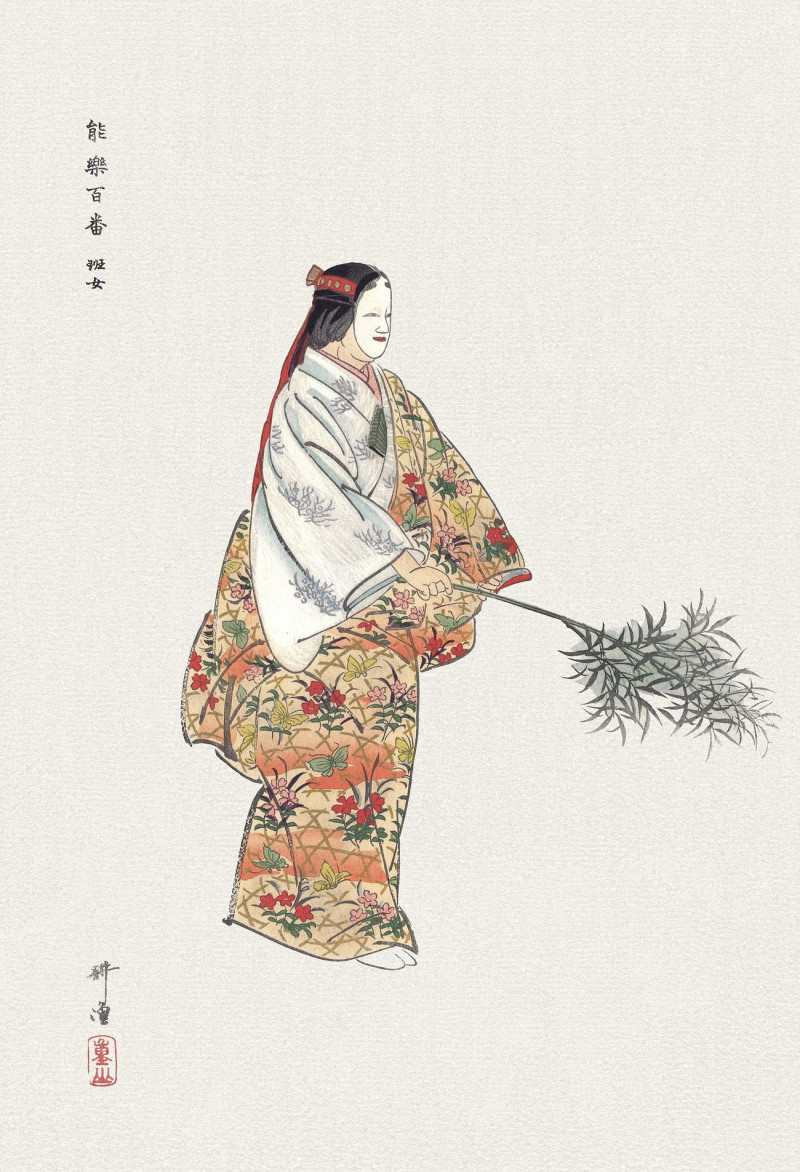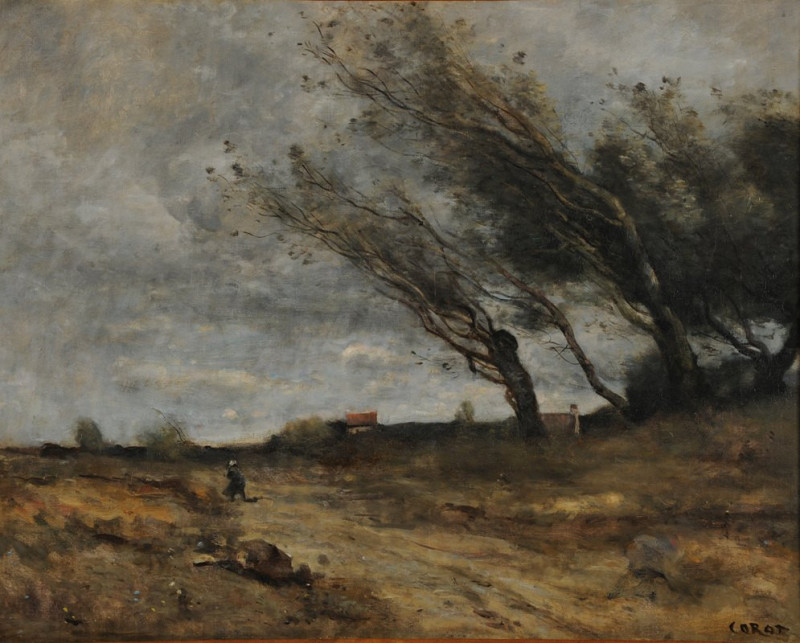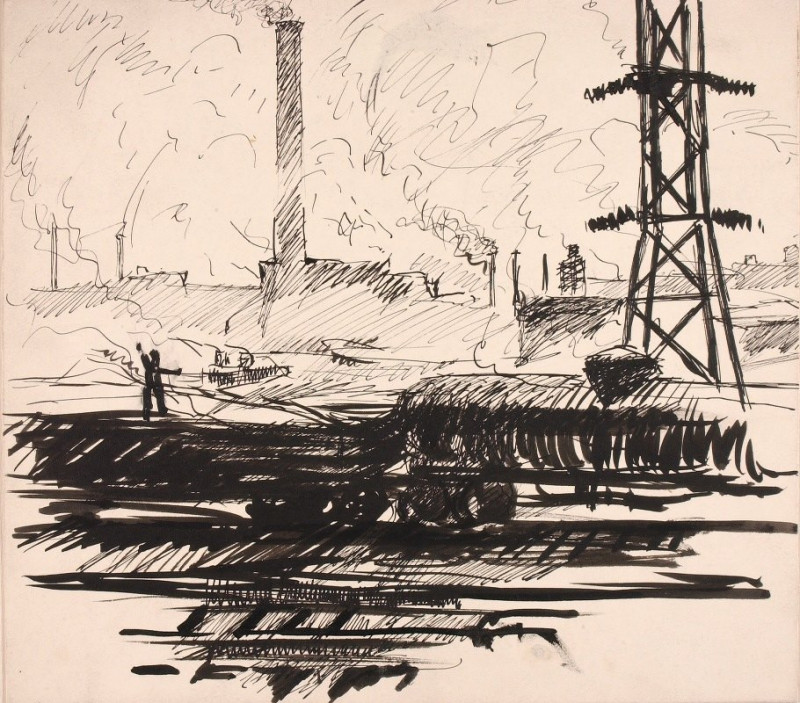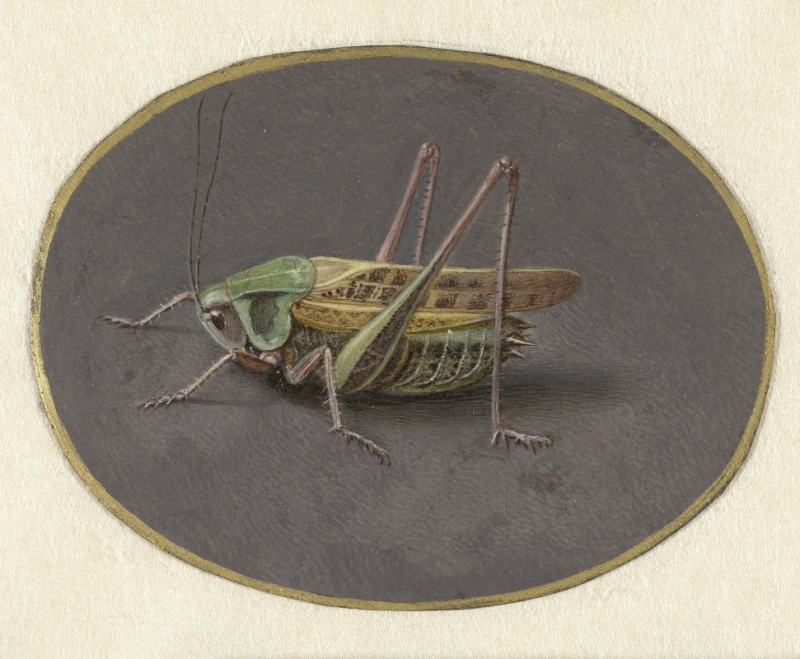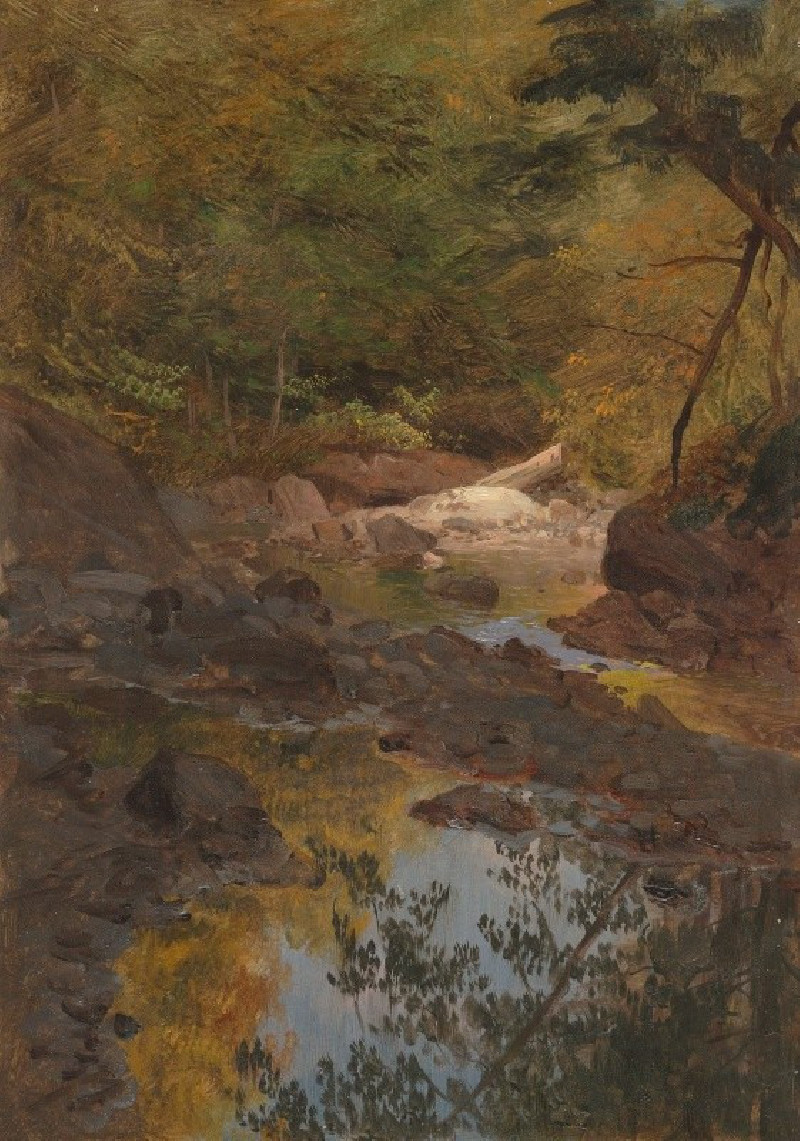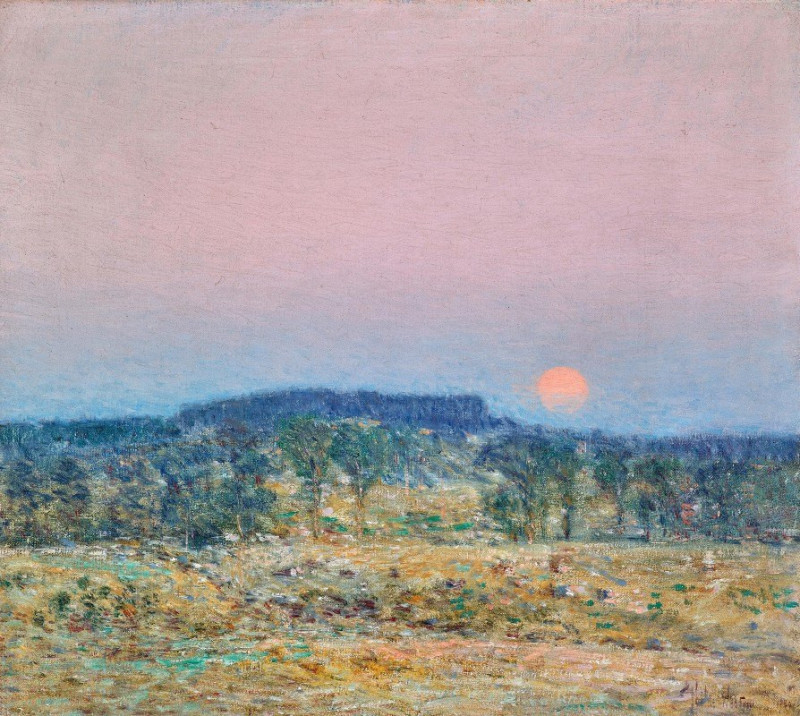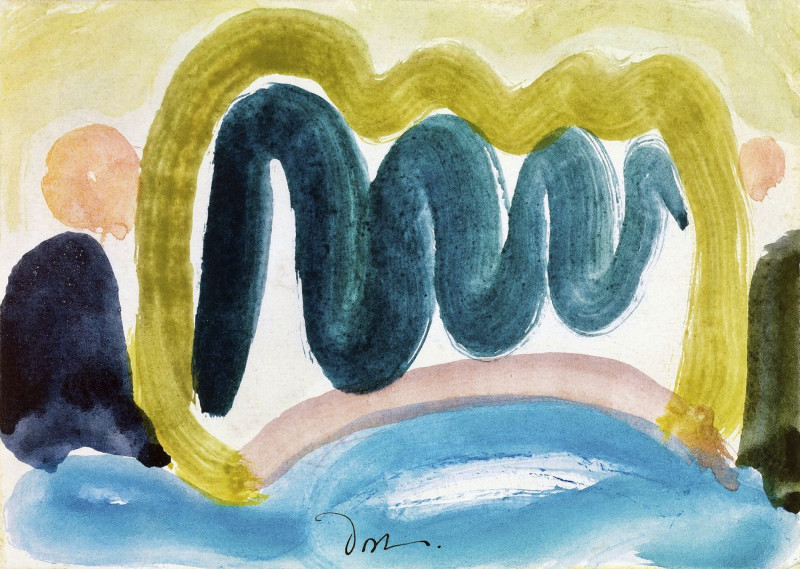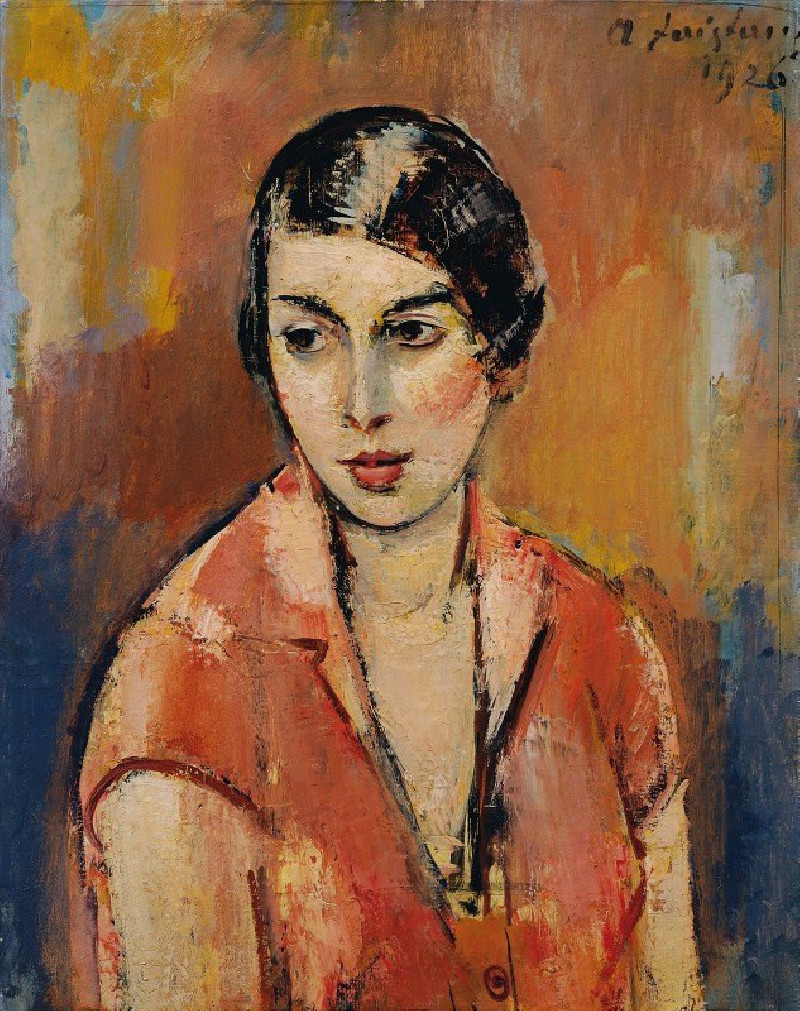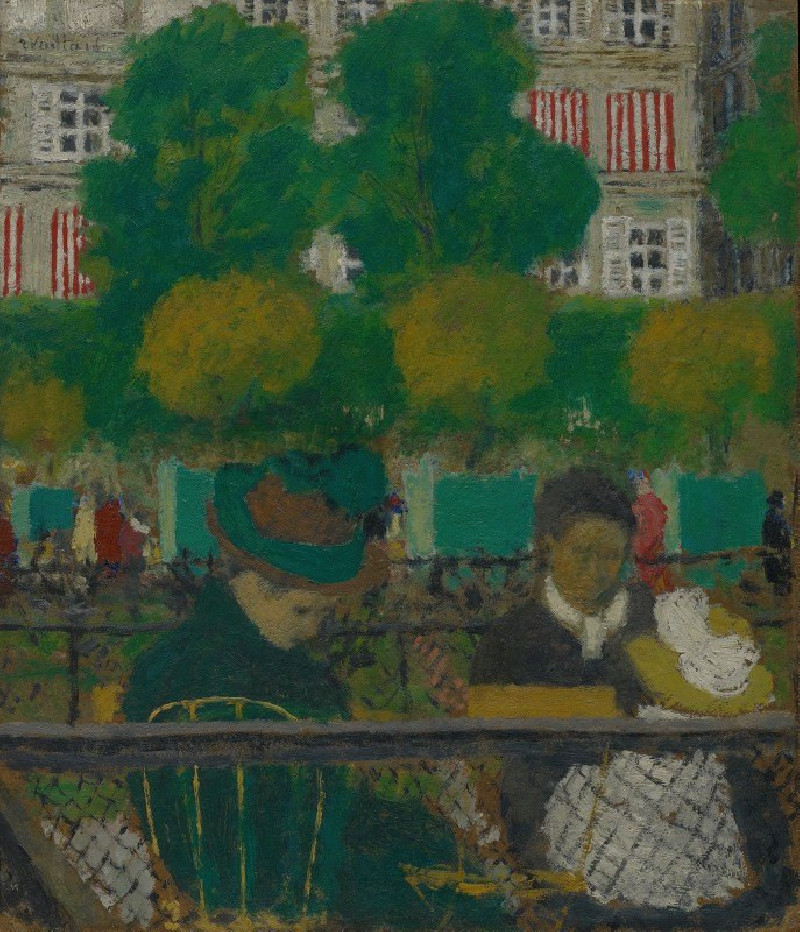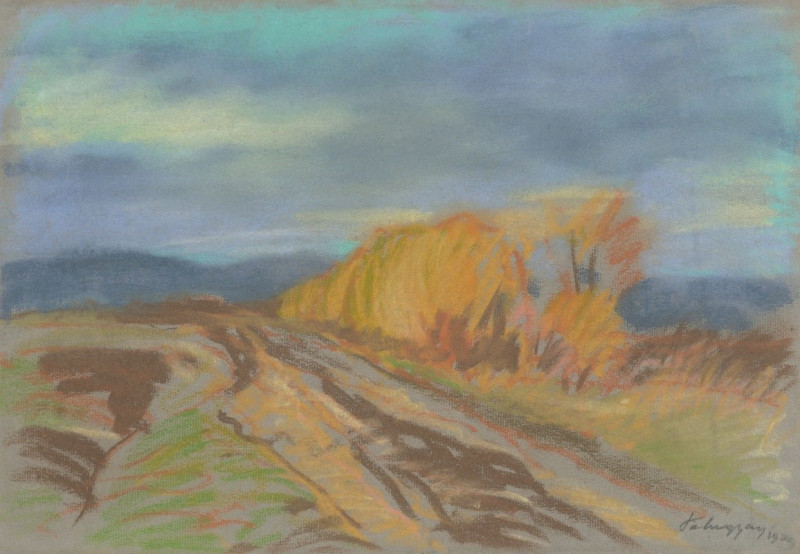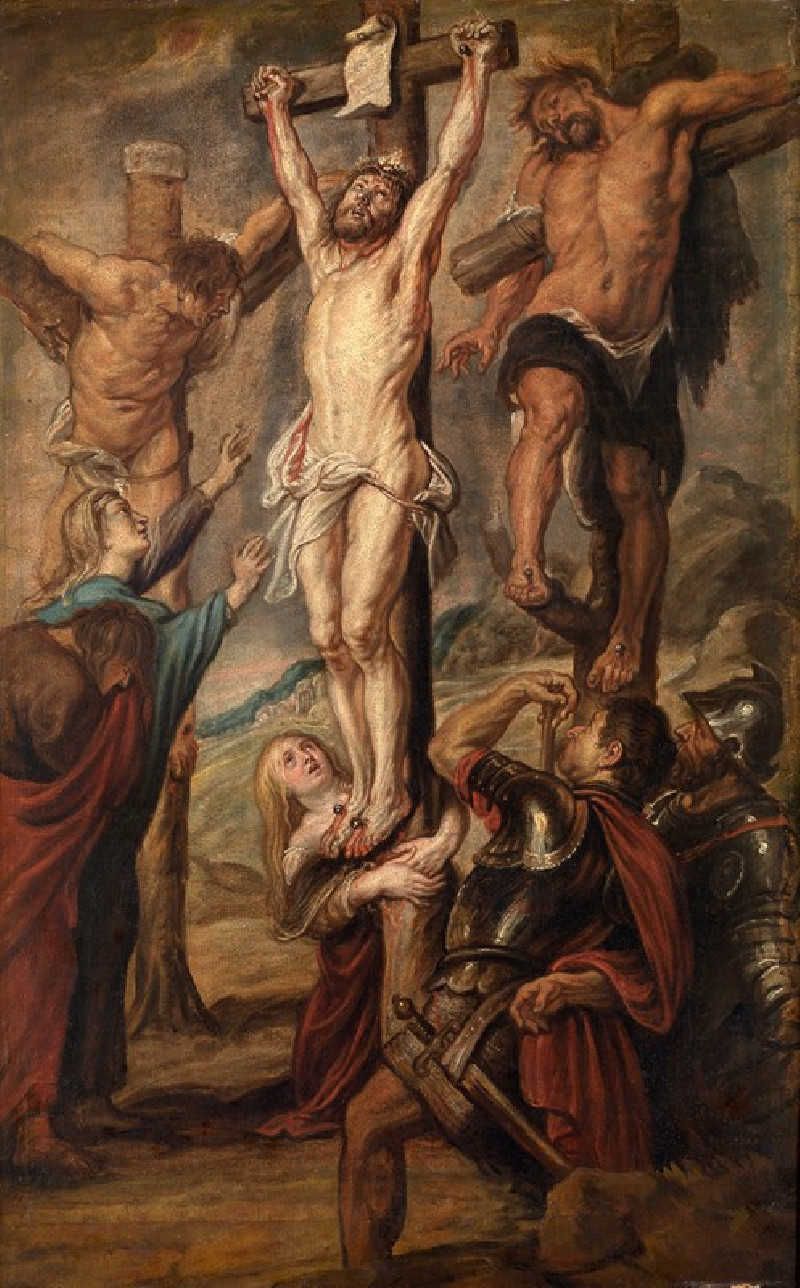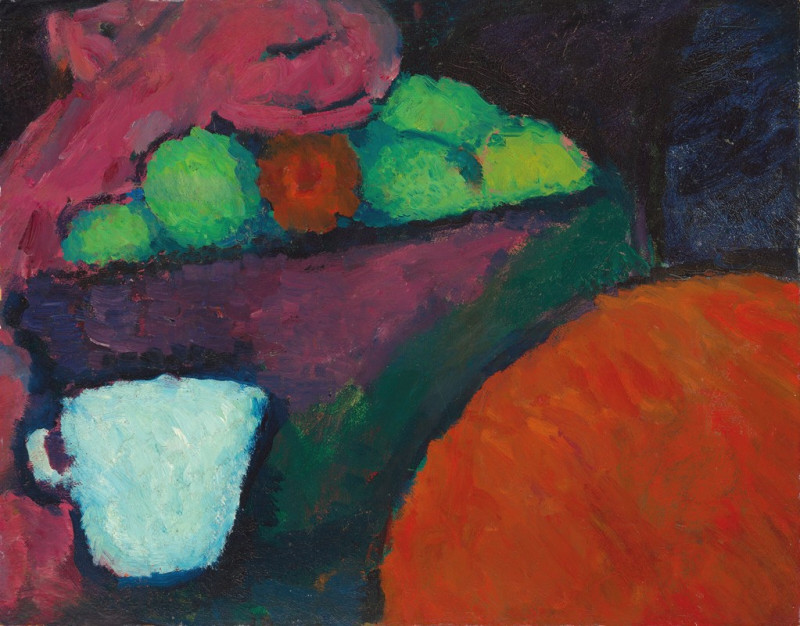Landscape (circa 1884-1886)
Technique: Giclée quality print
Recommended by our customers
More about this artwork
George Inness, a pivotal figure in American landscape painting, invites viewers into a meditative world through his evocative artwork titled "Landscape" (circa 1884-1886). This painting encapsulates Inness’s mastery in blending realism with a profound sense of mood, reflecting the Tonalist style that he is renowned for.The scene is set in a tranquil, natural space that seems almost untouched by human hands, save for the subtle inclusion of a small figure positioned in the lower left corner. This figure, potentially a shepherd, interacts gently with the environment, her presence harmonizing effortlessly with the surroundings, suggesting a narrative of living in tune with nature.Inness’s use of soft, muted tones and broad brushstrokes creates a luminous sky that dominates the canvas, setting a calm yet dynamic backdrop that seems to shift with light and shadow. This atmospheric quality is typical of Inness’s later works, where he aimed at capturing the emotional rather than just the visual landscape. The foreground features robust, dark greens of the grasses and trees, contrasting with the ethereal quality of the sky. A particularly striking tree bends with the wind, its branches etched against the expansive sky—a testament to the artist’s skill in conveying movement and form through his brushwork."Landscape" by George Inness is not just a visual experience but an emotional journey that echoes the artist’s belief in the spiritual through nature. It invites the viewer to pause and reflect, creating a moment of connection with the natural world.
Delivery
Returns
George Inness (May 1, 1825 – August 3, 1894) was a prominent American landscape painter.
Now recognized as one of the most influential American artists of the nineteenth century, Inness was influenced by the Hudson River School at the start of his career. He also studied the Old Masters, and artists of the Barbizon school during later trips to Europe. There he was introduced to the theology of Emanuel Swedenborg, which was significant for him; he expressed that spiritualism in the works of his maturity (1879–1894).


